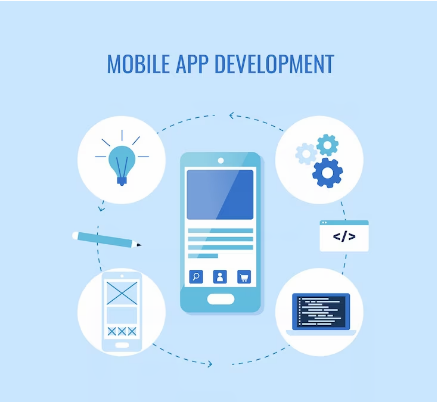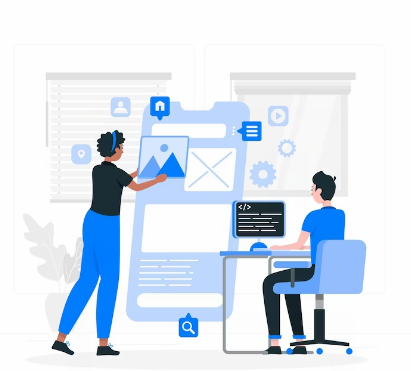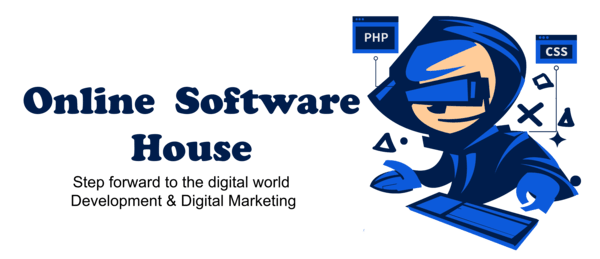In today’s digital age, front-end app development has become an essential aspect of creating engaging and user-friendly applications. The front-end of an application is what users directly interact with, and it plays a crucial role in providing a seamless and intuitive user experience. One of the key factors that determine the success of a front-end development project is the choice of programming languages. In this article, we will explore the top front-end app development languages, their features, and their relevance in the modern development landscape.
Introduction to Front-End App Development Languages

Front-end app development languages are programming languages that developers use to build the user-facing part of an application. These languages enable developers to create interactive and visually appealing interfaces that enhance the user experience. The choice of front-end development language depends on various factors such as project requirements, team expertise, and scalability needs.
HTML: The Backbone of Web Development
HTML, short for Hypertext Markup Language, is the foundation of every web page. It provides the structure and defines the elements of a web page, such as headings, paragraphs, images, and links. HTML is a markup language that uses tags to mark up the content and specify its semantics. With the latest version, HTML5, developers can leverage new features and APIs to build modern and responsive web applications.
CSS: Styling and Enhancing User Interfaces
CSS, or Cascading Style Sheets, is the language used to describe the visual presentation of a web page. It allows developers to define colors, layouts, fonts, and other visual aspects of the user interface. CSS works hand in hand with HTML to create appealing and responsive designs. With the introduction of CSS3, developers gained access to advanced features like animations, transitions, and flexible box layouts.
JavaScript: Powering Interactivity and Functionality

JavaScript is a versatile and dynamic programming language that brings interactivity and functionality to web applications. It allows developers to create dynamic content, handle events, manipulate the Document Object Model (DOM), and communicate with servers. JavaScript is widely used for client-side development and has a vast ecosystem of libraries and frameworks that streamline the development process.
TypeScript: Adding Type Safety and Scalability
TypeScript is a superset of JavaScript that introduces static typing to the language. It provides developers with features like type checking, interfaces, and classes, which enhance code quality, maintainability, and scalability. TypeScript compiles to plain JavaScript and can be seamlessly integrated into existing JavaScript projects. It has gained popularity in large-scale applications where type safety and tooling support are essential.
React: Building Interactive User Interfaces
React is a JavaScript library for building user interfaces. It follows a component-based approach, allowing developers to create reusable UI components. React leverages a virtual DOM (Document Object Model) for efficient rendering and offers a declarative syntax for describing UI components’ appearance and behavior. It has gained significant traction in the development community and is widely adopted for creating dynamic and interactive web applications.
Angular: A Comprehensive Framework for Web Development
Angular is a comprehensive front-end framework developed and maintained by Google. It provides a robust set of tools and features for building scalable and complex web applications. Angular follows a component-based architecture and offers features like data binding, dependency injection, and routing. With its extensive ecosystem and powerful CLI (Command Line Interface), Angular is a popular choice for enterprise-level applications.
Vue.js: Lightweight and Versatile Framework

Vue.js is a progressive JavaScript framework for building user interfaces. It focuses on the view layer and offers a simple and intuitive API for creating reactive components. Vue.js provides features like declarative rendering, component composition, and two-way data binding. It is known for its small size, ease of integration, and gentle learning curve, making it suitable for both small and large-scale projects.
Ember.js: An Opinionated Framework for Ambitious Apps
Ember.js is a JavaScript framework that aims to make the development of ambitious web applications more productive and efficient. It follows the convention-over-configuration principle, providing developers with a set of predefined patterns and best practices. Ember.js offers features like routing, data management, and an expressive template language. It is well-suited for projects that require a structured and opinionated approach.
jQuery: Simplifying DOM Manipulation
jQuery is a fast, small, and feature-rich JavaScript library. It simplifies DOM manipulation, event handling, and AJAX interactions. jQuery provides an easy-to-use API that abstracts away browser inconsistencies, making it effortless to write cross-browser compatible code. Although its popularity has decreased with the rise of modern frameworks, jQuery remains relevant and is often used for small-scale projects or when compatibility with older browsers is required.
Sass: Extending CSS Capabilities
Sass (Syntactically Awesome Style Sheets) is a CSS preprocessor that adds powerful features and capabilities to CSS. It introduces variables, nesting, mixins, and functions, which facilitate code reusability and maintainability. Sass code is compiled into standard CSS, which can then be used in web projects. With its robust ecosystem and wide adoption, Sass is a popular choice among developers for managing and organizing CSS code.
LESS: Streamlining CSS Development
LESS is another CSS preprocessor that simplifies the process of writing and managing CSS code. It extends CSS with features like variables, mixins, nested rules, and functions. LESS code is compiled into regular CSS, making it compatible with all modern browsers. LESS offers an easy-to-learn syntax and integrates seamlessly with existing projects, making it a suitable choice for developers looking to enhance their CSS workflow.
Stylus: Expressive and Dynamic Styling
Stylus is a CSS preprocessor that focuses on simplicity and expressiveness. It offers a concise syntax with minimal punctuation, allowing developers to write more readable and maintainable stylesheets. Stylus supports features like variables, mixins, nested selectors, and function calls. It compiles into standard CSS and can be integrated into any web project. Stylus is appreciated for its flexibility and elegant approach to CSS preprocessing.
Pug: Concise Templating Language
Pug (formerly known as Jade) is a templating language that simplifies the process of creating HTML templates. It offers a clean and concise syntax that eliminates the need for closing tags and indentation. Pug allows developers to write reusable and modular templates, making it easier to manage and update the UI. It compiles into HTML and can be used with any back-end technology or framework.
WebAssembly: Unlocking High-Performance Web Applications
WebAssembly (often abbreviated as Wasm) is a binary instruction format that allows running high-performance applications on the web. It enables developers to compile code written in languages like C, C++, or Rust into a format that can be executed in web browsers. Web Assembly offers near-native performance and opens up possibilities for building complex applications such as games, simulations, and video editing tools directly in the browser.
Final Thoughts
Front-end app development languages play a vital role in creating engaging and user-friendly applications. From the foundational HTML and CSS to the dynamic capabilities of JavaScript and the extensive ecosystems of frameworks like React, Angular, and Vue.js, developers have a wide range of options to choose from based on their project requirements and preferences. By understanding the strengths and features of each language, developers can make informed decisions and deliver exceptional front-end experiences.
FAQs
Choosing the right front-end app development language depends on various factors such as project requirements, scalability needs, and team expertise. Consider factors like the complexity of the application, available libraries or frameworks, and the learning curve when making your decision.
Yes, it is possible to use multiple front-end app development languages together. For example, you can combine HTML for structure, CSS for styling, and JavaScript for interactivity. Many frameworks and libraries also provide support for integrating different languages seamlessly.
No, it is not necessary to use a front-end framework for app development. Frameworks like React, Angular, and Vue.js offer additional tools and features that can simplify the development process, but you can build front-end applications using just HTML, CSS, and JavaScript if you prefer.
Different front-end app development languages have varying performance characteristics. For example, WebAssembly can provide near-native performance, while JavaScript may have limitations in handling heavy computational tasks. Consider the specific requirements of your application and assess the performance trade-offs when choosing a language.
There are numerous online resources available to learn more about front-end app development languages. You can explore tutorials, documentation, and online courses on websites like MDN Web Docs, W3Schools, freeCodeCamp, and various video learning platforms.





